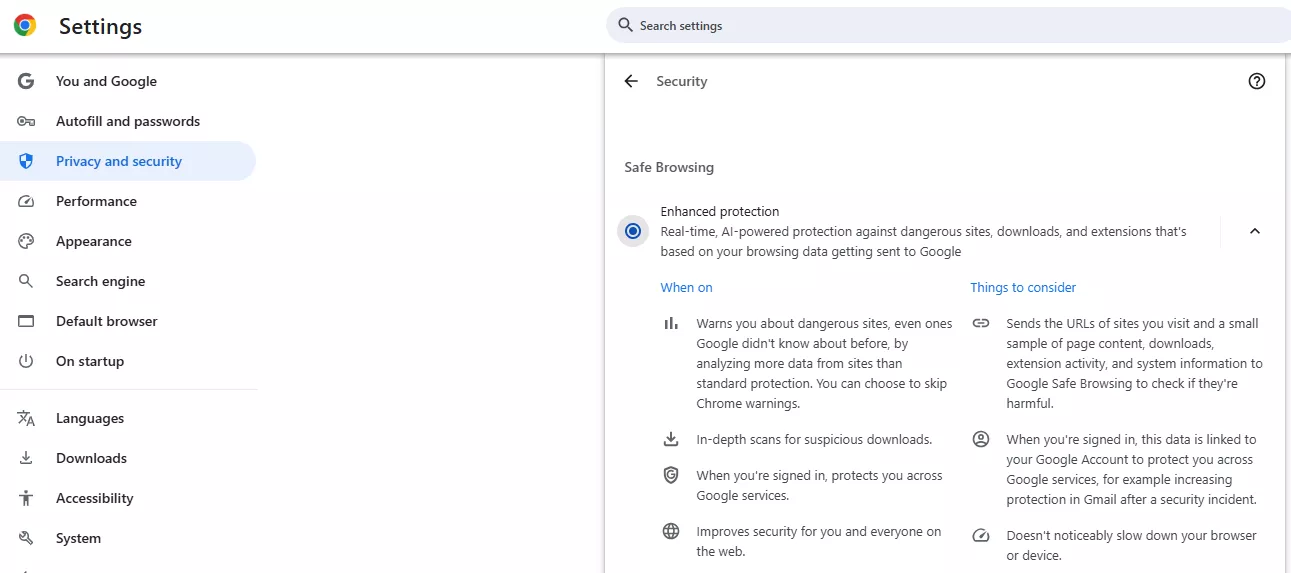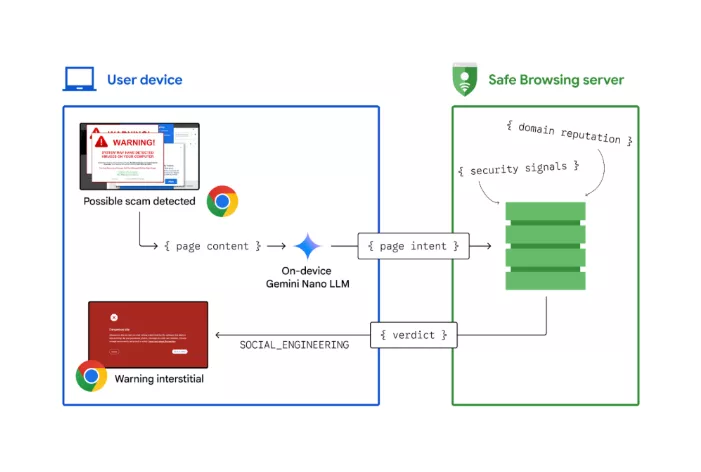Google Chrome Implements AI Technology to Combat Tech Support Scam Websites
Google is advancing its efforts to combat tech support scams through the integration of Artificial Intelligence (AI) within the Chrome browser. With the upcoming release of Chrome version 137, the company plans to implement the on-device Gemini Nano large language model (LLM) to identify and mitigate these fraudulent activities.
Users are already empowered to opt for Enhanced Protection within the browser settings under Settings > Privacy and security > Security > Safe Browsing.

Google’s rationale, which aligns with best practices in cybersecurity, is that LLMs possess a robust capability to understand and categorize the complex nature of websites. Given the ephemeral nature of many malicious sites, it is more efficient to train the model to recognize harmful behaviors rather than continually updating a block-list—a concern exacerbated by recent changes in Chrome’s privacy policies.
Tech support scams often exhibit common characteristics that can be learned effectively. These scams typically involve:
– Full-screen browser tabs
– Persistent display of contact numbers
– Fake alerts and ongoing scans
These patterns are critical indicators that can be programmed into the model’s learning algorithm. While Google has acknowledged their interest in utilizing the Keyboard Lock API, it is important to understand the implications of this technology. Originally intended for legitimate uses, such as enhancing gaming experiences, the Keyboard Lock API can be weaponized by scammers to prevent users from exiting scam pages, thus heightening the illusion that their device is compromised.
Google has opted for an on-device approach as it allows for real-time threat detection at an immediate moment of user engagement.
“We’ve found that the average malicious site exists for less than 10 minutes, so on-device protection allows us to detect and block attacks that haven’t been crawled before.”
How It Works
Upon encountering a suspicious website, as identified by the LLM based on certain triggers like the Keyboard Lock API, Chrome retrieves the webpage’s content and queries the model to extract security signals, including the site’s intent. This data is then sent to a Safe Browsing server for a conclusive assessment.
Should Safe Browsing determine that the site is malicious, Chrome will block access and display a warning screen—a measure essential for user protection.

Tech support scams manipulate users into believing their systems are infected to facilitate unauthorized access or financial exploitation.
“Tech Support scams are an increasingly prevalent form of cybercrime, characterized by deceptive tactics aimed at extorting money or gaining unauthorized access to sensitive data.”
Recent data from Malwarebytes’ Browser Guard indicates that 30% of fraudulent sites blocked through browser extensions fall into the category of tech support scams.

While Google’s initiatives are commendable, it is vital to recognize that Chrome is just one of many browsers available. Users across various platforms have reported encountering similar scams even while using alternative browsers.
In an era where cybersecurity threats are pervasive, proactive measures are essential to safeguarding devices from malicious activities. For comprehensive protection on mobile devices, we recommend utilizing dedicated solutions such as Malwarebytes for iOS and Android.








